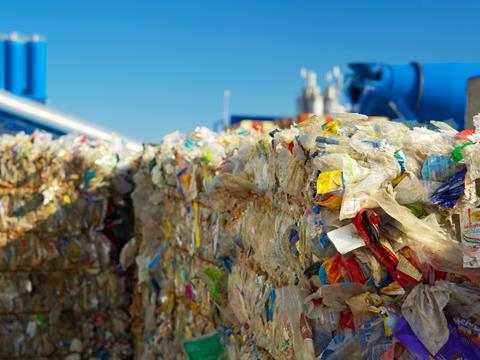
The Circular Economy for Flexible Packaging (CEFLEX) has developed the ‘Criteria for Circularity’ to provide a checklist for Extended Producer Responsibility (EPR) schemes.
CEFLEX, which brings together over 180 European companies, associations, and organisations, says that it believes EPR schemes are well-positioned to enable and coordinate a circular economy for flexible plckaging. The organisation adds that its ‘Criteria for Circularity’ come at a “critical moment” as EPR schemes increasingly seek to increase recycling targets and alight with other legislative drivers of packaging waste collection, sorting, and recycling.
According to CEFLEX, the ‘Criteria for Circularity’ have been developed as a constructive and practical checklist for EPR schemes and stakeholders as they work to enhance the circularity of packaging waste materials. The organisation explains that the criteria are part of its long-standing dialogue on EPR, which it adds is important to the commercial viability of a circular economy for flexible plastics.
The criteria state that, in an optimal scenario, EPR schemes are fully funded to develop a circular economy, should be lead strategically and with coordination, can act as an accelerator for recycled content and sustainable end markets, and will support investment, including for developing technologies such as chemical recycling.
CEFLEX says that the criteria form the basis for further discussion and development in four pillars: operational, which links with sorting, collecting, and recycling; financial, which includes covering the full net costs associated with returning recycled materials to the market; communication, including ensuring that consumer guidance is provided; and governance, which covers representative leadership and access to expertise. These pillars apparently connect with and build on work from the Consumer Goods Forum and other initiatives targeting flexible packaging.
The organisation adds that the ‘Criteria for Circularity’ were developed in partnership with brand owners, EPR schemes, and the flexible packaging value chain through several months of feedback sessions.
Graham Houlder, project coordinator of CEFLEX, comments: “In a circular economy, all materials need to be captured, recycled and used in a wide range of sustainable end markets – independent of cost and recycling targets.
“EPR systems designed to deliver circular materials and funded accordingly, will help create the conditions to allow all parts of the value chain to make the changes necessary to go circular.”
Joachim Quoden of EPR industry body EXPRA adds: “Organisations with specialist insights and a critical mass of value chain participation can help stakeholders led by EPR boost what is collected, sorted and recycled to be used again and again.
“Flexible packaging is a challenging area where we need to bring the relevant partners and innovations to the table, and here CEFLEX can be an important part of the solution.”
In addition, CEFLEX has provided insights to support EPR schemes in processing flexible packaging, including its design guidelines, which can reportedly be used as a basis for eco-modulation, specifying the parameters for sorting centres, mass flow and financial modelling on collection and sorting, and multi-country compositional analysis. Earlier this year, CEFLEX was awarded funding by UK Research and Innovation (UKRI) to further develop its Designing for a Circular Economy (D4ACE) guidelines, with additional studies into specific design elements and how these impact sorting and recycling.
According to Mike Jefferson, a consultant at CEFLEX who has been closely involved in developing criteria and sourcing feedback from schemes across Europe: “These can help EPR front runners looking to fine tune their latest developments in sorting and recycling. Or give those yet to collect flexible packaging the knowledge to set up and optimise systems based on best practice and learning from others.”




















No comments yet